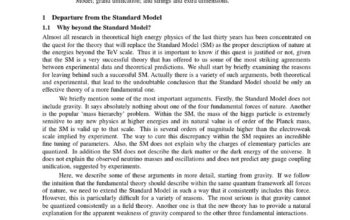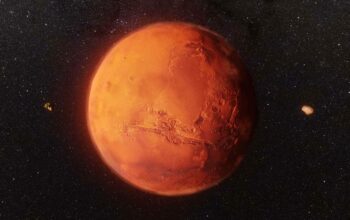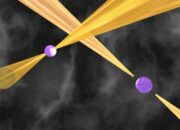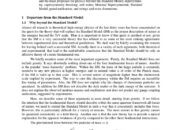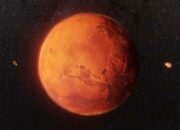The cosmos, with its vast expanse and enigmatic qualities, has long captivated the human imagination. As scientific inquiry progresses, questions concerning the origins of life emerge with increasing frequency. Amino acids, the fundamental building blocks of proteins, lie at the epicenter of this exploration. Understanding their role in astrobiology—a field dedicated to the study of life in the universe—serves as a compelling narrative and fuels intrigue regarding the potential for extraterrestrial life.
Amino acids are organic compounds characterized by the presence of amine (-NH2) and carboxyl (-COOH) functional groups, along with a distinctive side chain that differentiates each amino acid from another. Collectively, there exist twenty standard amino acids, which function through various biochemical mechanisms in terrestrial life. Their synthesis is pivotal for the formation of proteins that execute critical cellular functions. However, the scrutiny of amino acids transcends Earth; astrobiologists are investigating their existence and implications in extraterrestrial environments.
To appreciate the significance of amino acids in space, we must first delve into their origins. Theories regarding the genesis of life on Earth frequently reference the primordial soup hypothesis. This premise posits that abiotic chemical reactions yielded organic molecules in early Earth’s atmosphere. Notably, experiments, such as the Miller-Urey experiment in 1953, demonstrated that amino acids could form under conditions that mimic early Earth. Strikingly, these scientific advancements raise the question: could similar processes occur elsewhere in the universe?
Current astronomical observations unveil a tapestry rich with complexity; our galaxy harbors numerous interstellar clouds, replete with dust and gas. Within these molecular clouds, organic compounds, including amino acids, have been detected. The discovery of glycine, the simplest amino acid, in the comet 67P/Churyumov-Gerasimenko, emphasizes the dynamics of amino acid formation in astrological locales. Moreover, additional studies have uncovered amino acids in meteorites, revealing that these components are not exclusively terrestrial but potentially cosmological in origin.
Furthermore, these findings stand in conjunction with the concept of panspermia—an intriguing hypothesis suggesting that life may propagate throughout the cosmos through dormant microbial spores or organic matter hitching rides on comets and asteroids. If amino acids and other organic compounds can indeed survive the rigors of space travel, our perception of life’s potential origins is irrevocably altered. Life, rather than a singular occurrence on Earth, could be a widespread phenomenon across the universe.
The implications extend beyond mere existence. The biochemical versatility exhibited by amino acids facilitates a diverse array of life forms. Indeed, the functionality of proteins sourced from amino acids is utilized in pathways that govern biochemical reactions, structural integrity, and cell signaling. This functional plasticity underscores an essential query: what form might life take in environments distinct from our own? It is conceivable that alien life could rely on alternative amino acids or exhibit unique biochemistry, posing exciting avenues for research.
Astrobiologists have begun the arduous task of developing biosignatures—indicators of life—based on the chemical profiles of amino acids and their potential derivatives. Understanding which amino acids differentiate life from non-life goes beyond curiosity; it creates a framework for identifying habitable worlds and seeking extraterrestrial organisms proactively. Analyzing atmospheric compositions on exoplanets through spectroscopic tools could reveal the presence of astrobiologically significant compounds, enhancing the search for intelligent life.
The advent of space exploration technologies has unlocked frontiers previously deemed unreachable. Missions to Mars, for instance, have reignited interest in the Red Planet as a possible host for ancient life. The discovery of vanadium and other trace elements, coupled with the detection of amino acids, suggests a multidisciplinary approach. Understanding Martian geology, atmospheric dynamics, and potential subsurface habitats could elucidate the history of life beyond Earth.
Moreover, researchers are advocating for astrobiological missions to icy moons, such as Europa and Enceladus, which harbor subsurface oceans. Encased beneath layers of ice, these aqueous environments may provide the same conditions that encouraged life on early Earth. Biochemical analysis of plumes erupting from these moons could reveal amino acids and other precursors, creating a tantalizing nexus between chemistry and biology.
As our inquiries transcend planetary boundaries, we must also consider the ethical implications of extraterrestrial life. The exploration of alien habitats must proceed with caution; understanding the biosphere of another world informs our responsibilities toward these ecosystems. The potential for contamination—both forward and backward—necessitates stringent protocols, ensuring that our exploration is respectful and preserves the sanctity of cosmic biodiversity.
In summation, the study of amino acids in space represents a paradigm shift in our understanding of life’s genesis and distribution across the cosmos. As we extract chemical secrets from distant giants outlined in the night sky, our pursuit deepens. The presence of amino acids heralds tantalizing possibilities, inviting us to contemplate life among the stars—a notion once relegated to the realm of science fiction is now on the cusp of scientific discovery. As curiosity compels humankind to explore the vast universe, the quest for understanding continues, forging connections in the grand tapestry of existence.



